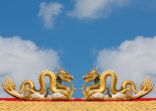Further easing measures are expected as current economic indicators in China have not improved, AXA Investment Managers and Schroder said recently.
Separately, Schroder’s recently cautioned on the overheating in China’s market while BlackRock said it would prefer a selective investment approach following the surge in A- and H-shares.
In India, managers like Franklin Templeton said they expect Indian markets to rise as corporate sector earnings improve, but patience is needed for the much-awaited reforms to actually get implemented.
Despite the near-term concerns in Asia’s key markets, the region still looks attractive compared to developed markets due to better economic growth prospects, a growing consumer class with more disposable income, easy monetary policies and reform initiatives in key economies like India and China.
Against this backdrop, Fund Selector Asia takes a look at the BlackRock Asian Dragon Fund and the Investec Asian Equity Fund.
Both funds are domiciled in Luxembourg. The BlackRock fund was launched in January 1997 and had $1.4bn in assets under management (AUM) on 31 March.
The Investec Asian Equity Fund has an older vintage and larger AUM than the BlackRock fund. The Investec fund was launched in June 1984 and had $3.8bn in AUM on 31 March.
Both funds invest in companies in Asia ex-Japan, but there is significant difference in their investment approach, said Leonie Yoong, vice president of funds solutions in Asia at Coutts.
The BlackRock fund uses a bottom-up, fundamental stock-picking approach for the majority of its portfolio and will take advantage of mis-priced stocks in the short-term, Yoong said in her comparative analysis of the funds.
In regards to the Investec fund, the investment universe is established on the basis of a quantitative model and the screened stocks are then continuously reviewed through a qualitative filter, she said.
Investment strategy review
The BlackRock fund had been choosing investments primarily through fundamental research. But the management style changed after Andrew Swan joined the firm as head of the Asia fundamental equity team in August 2011, Yoong said.
The team now has a more flexible investment style to take advantage of market conditions for alpha generation, she said.
“The fund has moved from a pure value approach to a more flexible approach. It incorporates both elements of value and growth [investing], depending on prevailing market conditions.”
The BlackRock fund typically holds 50 to 80 stocks.
The Investec fund, by comparison, filters the investment universe by using the firm’s proprietary quantitative-driven “4Factor” process, she said.
Companies that pass the 4Factor screens are then researched by Greg Kuhnert, the portfolio manager and his team of supporting analysts resulting in a portfolio of 70 to 100 stocks.
Investec’s 4factor model is based on four factors: strategy, value, dynamics and technical, as per information on its website.
The model screens for companies that have created value for shareholders in the past, have improving operating performance, look cheap relative to the market index and whose share prices are trending upward due to increasing investor attention.
Both funds have a large-cap bias. But the BlackRock fund tends to have greater exposure to mid- and small-cap companies compared to the Investec fund.
The BlackRock fund has invested about 8.7% of its assets in mid-cap companies and 1.3% in small-cap companies. The Investec fund has 3% allocation to mid-cap companies.
“The BlackRock fund is open to investing in smaller companies that have proven the soundness of their business models and have strong potential for long-term growth.”
Both funds invest in companies in Asia ex-Japan. However, the Investec fund has the flexibility to invest in Australia and New Zealand. It can also invest up to 10% of its net asset value in onshore Chinese equities.
In terms of geographic allocation, the BlackRock fund is overweight on China, India and Korea, according to the portfolio on 31 March. On the other hand, the fund is underweight Taiwan and Hong Kong.
“Swan and his team are currently constructive on China, Korea and India given these countries’ strong potential for reforms. Market valuations in Korea and China remain cheap, while India has the prospect of continued growth,” Yoong said.
The Investec fund is overweight China and Hong Kong, she said.
Both funds have similarities in sector allocation, holding significant allocation toward financial and information technology sectors. The BlackRock fund has nearly 58% of its assets deployed collectively in these two sectors. The corresponding figure was about 70% for the Investec fund.
The two funds have a bit of overlap in their top five holdings.
The top 10 holdings of the BlackRock fund account for 34% of its assets whereas the Investec fund’s top 10 holdings represent nearly 41% of its assets.
A snapshot of the two portfolios:

Performance Review

Source: Lipper IM, on total return basis, in USD terms
Both funds share the same benchmark, the MSCI AC Asia ex-Japan Index.
“Since Swan took over management of the BlackRock Asian Dragon Fund, the fund has outperformed the MSCI AC Asia ex-Japan Index, its benchmark index, during various periods to 30 April (see table below).”
The BlackRock fund also outperformed the Investec fund in calendar year 2012 and 2013. In 2014, performance of two funds were similar.
“Despite the market correction experienced during the taper tantrums [in 2013], the BlackRock fund was able to add alpha to the portfolio. The bulk of the outperformance happened in the last quarter of the year, driven by select investments in new energy, internet and gaming companies,” Yoong said.
Calendar year performance:

Source: Lipper IM, on total return basis, in USD terms. MSCI Index above refers to MSCI AC Asia ex Japan TR USD Index
Performance over various periods until 30 April:

Source: Lipper IM, on total return basis, in USD terms. MSCI Index above refers to MSCI AC Asia ex Japan TR USD Index
The Investec fund showed a mixed performance against the MSCI AC Asia ex-Japan Index.
“It beat the benchmark index in calendar years 2013 and 2014. It also outperformed the index over one- and three-year time periods to 30 April.”
She pointed out that the underperformance against the index was small for the rest of the periods, as seen in the table.

Over the long-term, the Investec fund has fared better than the index. It registered 54.8% return over a five-year period to 30 April compared to index’s rise of 44.2%. Over ten-year period, the fund gained nearly 237% whereas the index rose about 184%.
Performance over five and 10-year period to 30 April:

Source: FE
Annualised standard deviation, a measure of portfolio volatility, was higher for the BlackRock fund (14.3% for three-year period to 30 April) compared to both the Investec fund (13.3%) and the benchmark index (12.3%)
Manager Review

The BlackRock fund is managed by Andrew Swan, who joined the firm in in August 2011. As mentioned earlier, he is head of the Asia fundamental equity team.
Swan is responsible for managing several regional equity portfolios, setting investment strategy and developing BlackRock’s Asian investment platform. Prior to BlackRock, he was with JP Morgan for 17 years.
He is also managing other funds at Blackrock: the BlackRock Asia Pacific Ex- Japan, the BlackRock Asia Special Situations, the BlackRock GF India, the BlackRock Global Funds ASEAN Leaders, the BlackRock Global Funds Asian Growth Leaders, the BlackRock Global Funds China and the BlackRock Global Funds Asia-Pacific Equity Income.
“Swan is supported by an able team of portfolio managers and analysts, although there was some notable turnover within the team in mid-2014. Swan has since rebuilt and further strengthened the team,” Yoong said.

The Investec fund has been managed by Greg Kuhnert since 2005, according to FE Analytics.
Kuhnert is a portfolio manager and financial sector specialist on the 4Factor global equity team at Investec Asset Management. He is the lead manager for Asian investment strategies. He joined Investec in 1999 as an analyst researching Asian and global equities.
“While Kuhnert is supported by a broader team, he continues to be responsible for much of the qualitative research on companies that have passed Investec’s 4Factor screens.”
Kunhert is also manager of the Investec Asia-Pacific Equity and the Investec Asia ex-Japan funds.
Fees

Both the BlackRock fund and the Investec fund levy annual management fees of 1.5% for their retail share classes.
The ongoing charges or total expense ratio for the BlackRock fund was 1.86% for the year ended 31 August. The TER for the Investec fund was 2.05% for the year ended December.
“The higher figure for the Investec fund is interesting, particularly given the fund’s AUM is significantly larger than the BlackRock fund,” Yoong said.
Conclusion

Both funds have proven the ability to enhance returns over market cycles.
The BlackRock fund has shown greater potential for alpha generation and delivered strong returns since Swan took charge of the fund.
But this has come with greater volatility, Yoong said.
“The BlackRock fund might face more downside risk should there be sharp corrections in the market.
“The Investec fund should outperform its benchmark when there are clear market trends. But it is likely to lag during periods of volatility or market inflection points.
“The Investec fund is likely to deliver more consistent performance and modest alpha generation against the market over longer time periods,” Yoong concluded.
















